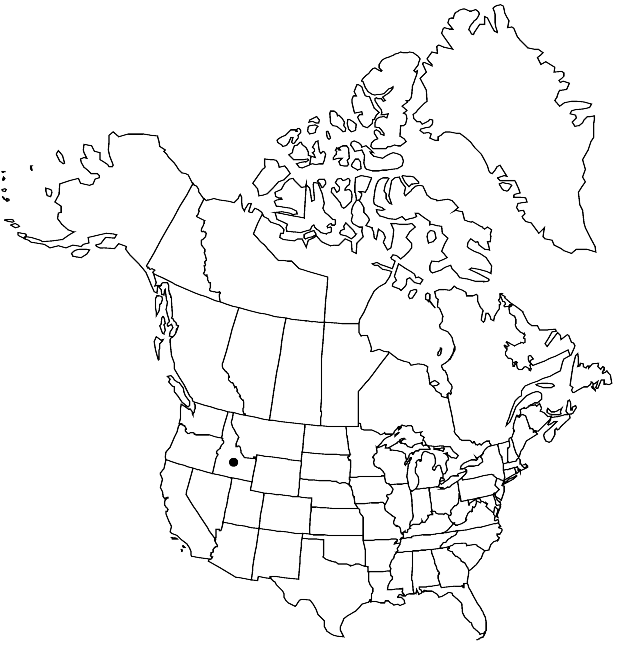Difference between revisions of "Draba oreibata"
Amer. J. Bot. 4: 257. 1917.
FNA>Volume Importer |
FNA>Volume Importer |
(No difference)
| |
Revision as of 22:54, 16 December 2019
Perennials; (cespitose); caudex branched (with persistent leaves, branches sometimes terminating in sterile rosettes); scapose. Stems unbranched, 0.2–0.9 dm, glabrous throughout. Basal leaves rosulate; sessile; blade oblong to narrowly oblanceolate, 0.2–1 cm × 0.6–2(–4) mm, margins entire, (ciliate, trichomes simple, 0.1–0.5 mm, apex obtuse), surfaces glabrous. Cauline leaves 0. Racemes 3–8-flowered, ebracteate, considerably elongated in fruit; rachis slightly flexuous, glabrous. Fruiting pedicels divaricate-ascending to ascending, straight, 4–13 mm, glabrous. Flowers: sepals oblong, 1.7–2.5 mm, glabrous; petals white, oblanceolate to obovate, 3.5–4.5 × 1.2–2 mm; anthers ovate, 0.3–0.4 mm. Fruits oblong to narrowly so, slightly twisted, flattened, 5–9 × 1.5–3 mm; valves glabrous; ovules 8–16 per ovary; style 0.3–0.9(–1.2) mm. Seeds oblong, 0.9–1.3 × 0.6–0.8 mm. 2n = 32.
Phenology: Flowering May–Jul.
Habitat: Limestone cliffs, talus
Elevation: 1800-2700 m
Discussion
R. C. Rollins (1993) and N. H. Holmgren (2005b) divided Draba oreibata into two varieties: the Idaho endemic var. oreibata and the Nevada endemic var. serpentina. As indicated by I. A. Al-Shehbaz and M. D. Windham (2007), the two taxa are morphologically distinct, have different chromosome numbers, and are separated by over 480 kilometers. They are treated herein as separate species, and distinguished by characteristics discussed by Al-Shehbaz and Windham. Draba oreibata, in the strict sense, is known from Blaine, Butte, Clark, Custer, and Lemhi counties.
Selected References
None.
